
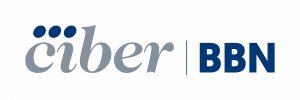
 |
The objective of the Unit 16 is to support researchers in the analysis of surface properties, as well as to test and characterise surfaces against bacterial colonisation, allowing a broad understanding of the chemical and physical properties of surfaces.
The combination of the information on the elements present and their co-ordination state, given by the XPS technique, and the molecular structure of the surface provided by the ToF-SIMs equipment, provides the chemical characterisation of the upper layers of the surfaces.
The physical characterisation of the surfaces deals with properties such as surface free energy, hydrophobicity, topography, electrical and mechanical properties of the surfaces and surface forces. For this purpose, the Unit 16 has experience in handling different instruments such as goniometer, optical profilometer, zeta potential analyser and AFM. Its capabilities allow it to work with extended and powdered solids, including those of biological origin such as cells and bacteria.
Along with physical and chemical characterisation, the Unit 16 can provide testing services for microorganism adhesion, viability and biofilm formation on surfaces.
Surface analysis laboratory fulfils the ISO9001:2008 (ES050823-1). ![]()
| Ref | Title | Funding Organism | Unit Role |
|---|---|---|---|
| MAT2015-63974-C4-3-R | SUPERFICIAL CHARACTERIZATION AND MICROBIAL ADHESION OF BIODEGRADABLE AND BIOREABSORBIBLE MATERIALS MAGNESIUM BASE FOR BONE REPAIR | MINISTERIO DE ECONOMÍA Y COMPETITIVIDAD | Working package |
| MAT2015-63974-C4-4-R | FORMATION OF MICROBIAL BIOFILMS ON BIODEGRADABLE AND BIOREABSORBABLE MG MATERIALS FOR BONE REPAIR AND BIOCOMPATIBILITY OF THESE IN EXPERIMENTATION ANIMALS | MINISTERIO DE ECONOMÍA Y COMPETITIVIDAD | Participant |
| MAT2014-52905-REDT | RESEARCH NETWORK FOR THE DEVELOPMENT OF FUNCTIONALIZED TITANIUM IMPLANTS | MINISTERIO DE ECONOMÍA Y COMPETITIVIDAD | Oberver |
| PCIN-2016-146 | SIGNAL IMPLANT FOR ACCESSION AND BONE GROWTH | MINISTERIO DE ECONOMÍA Y COMPETITIVIDAD | Oberver |
04 Nov
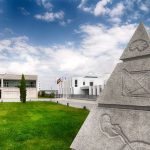
NANBIOSIS held its 2025 networking event in Cáceres to boost collaboration among Units in biomaterials, nanomedicine, and biomedical research. Cáceres, October 2025 — From 22 to 24 October 2025, the Singular Scientific and Technical Infrastructure (ICTS) NANBIOSIS held its annual internal networking event at the Centro de Cirugía de Mínima Invasión Jesús Usón (CCMIJU) in Cáceres, Spain. The event brought together Unit coordinators, researchers, and technical staff from across Spain to foster collaboration, share scientific progress, and explore new opportunities for joint projects in biomedical research, nanomedicine, and biotechnology. A meeting to boost collaboration across NANBIOSIS Units The three-day event[...]
06 Aug
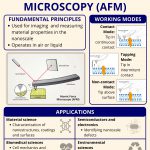
Discover how Atomic Force Microscopy (AFM) provides nanometric precision in imaging, mechanical analysis, and electrochemical characterization of surfaces. Explore real-world applications in nanotech, semiconductors, and biomedicine. Introduction Atomic Force Microscopy (AFM) is a cutting-edge surface characterization technique that enables researchers to explore surfaces with nanometer-scale precision. Unlike optical or electron microscopes, AFM uses a mechanical probe to scan and measure the surface topography, material properties, and interactions at the atomic level. The versatility of AFM allows it to operate in various environments, including air, vacuum, and liquids. This makes it ideal for a wide range of applications, from materials scienc[...]
31 Jul
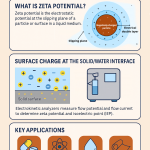
Explore the importance of zeta potential and surface charge at the solid/liquid interface for biomaterials, membranes, and nanomaterials. What is Zeta Potential and why does it matter? Zeta potential is a key physicochemical parameter that describes the electrostatic potential at the slipping plane of a solid surface in a liquid medium. It is not a direct measure of surface charge but rather the potential at the boundary between the stationary layer of fluid attached to the surface and the mobile layer of the surrounding liquid. This parameter is crucial for understanding the behavior of colloidal dispersions, emulsions, and particles in[...]
04 Apr
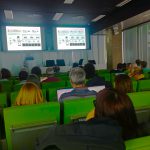
NANBIOSIS joins CIBERES meeting to foster collaboration in nanomedicine and infectious disease research, showcasing capabilities and innovations. Zaragoza, march 2025. Last week, the CIBERES Infectious Diseases Program Meeting took place at the Centro de Investigación Biomédica de Aragón (CIBA), bringing together leading experts in respiratory infectious diseases to explore new research collaborations. The event featured presentations from various CIBER research areas, including CIBERINFEC, CIBERESP, and CIBER-BBN, highlighting potential synergies in tackling infectious diseases. NANBIOSIS Director Ramón Martínez Máñez introduced the nanomedicine research lines, emphasizing the support on biomedical innovation. Other key speakers included Roberto Hornero, who presented the Bioengineering researc[...]
21 Feb
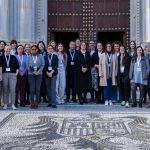
Nearly 40 scientists across 7 countries are pioneering this breakthrough in wound healing using a nobel and affordable bio-inspired, anti-bacterial matrix. In addition to the vast consortium, the project also comprises 5 small and medium-sized enterprises (SMEs) and 9 academic institutions. These were convened last February at the University of Granada to share insights, progress, and strategies. According to an article published by UGR at the beginning of this month, about 40 researchers involved in the project have attended a meeting to share results and progress. The Horizon Europe project NABIHEAL, coordinated by the Biomedical Research Networking Center (CIBER) at[...]
08 Nov
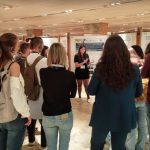
2023 CIBER-BBN Annual meeting has taken place at Santemar Hotel, in Santander during November 6-7. This year the format of our annual conferences has been changed towards a collective event scheme between the CIBER-BBN and CIBEREHD thematic areas. On Monday 6 the scientific sessions werecommon for EHD and BBN, with appealing contents for the mixed audience. On Tuesday 7 EHD and BBN sessions will specific for each area in separate rooms (with common coffee break). Posters of both areas were on display in the exhibit hall throughout the entirety of the Annual Meeting. Moreover, at the “Posters & beers” session (Monday[...]
08 Nov
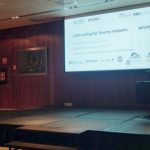
The annual conference of the scientific áreas of CIBER (the most important Centre for Biomedical Research in Spain) are hotly awaited every year for the CIBER community as a foro to be updated about emerging key technologies and discuss about research lines and results, find new opportunities to collaborate and join efforts towards common objectives. Moreover, this year, the Annual Conference of CIBER-BBN (Bioengineering, Biomaterials and Nanomedicine) has been organized as a collective event scheme together with the scientific area of CIBEREHD (Digestive and Liver Diseases). Both areas have already shared experiences of collaborative projects, demonstrating the complementarity of their fields.[...]
03 Jun
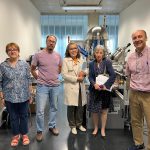
On May 16 representatives of the General Subdirectorate of Large Scientific-Technical Facilities of the Ministry of Science and Innovation visited unit 16 of NANBIOSIS (created by Centro de Investigación Biomédica en Red -CIBER-, and the University of Extermadura). Mrs. Beatriz Albella Rodríguez and Mrs. María Jesús Marcos Crespo, got to know first-hand the facilities of unit 16 of the CTS NANBIOSIS of “Surface Characterization and Calorimetry“. The visit was guided by the Scientific Director of Unit 16 of NANBIOSIS, Maria Luisa González Martín, and by Mr. Javier de Francisco Morcillo, Director of the Secretariat for Scientific Infrastructure and Technological Development[...]